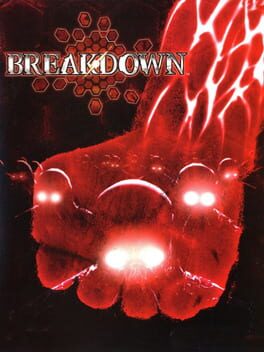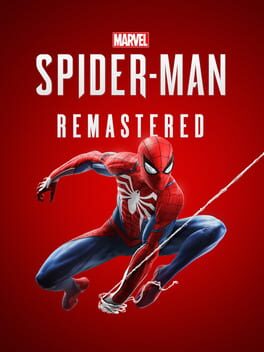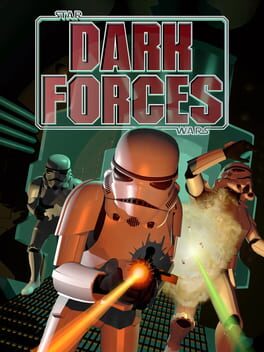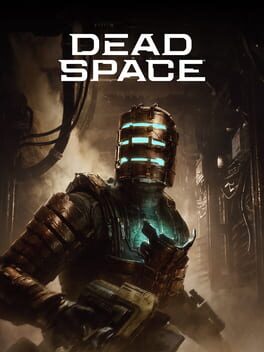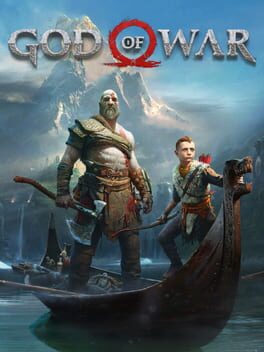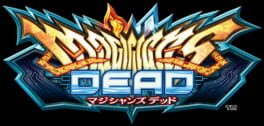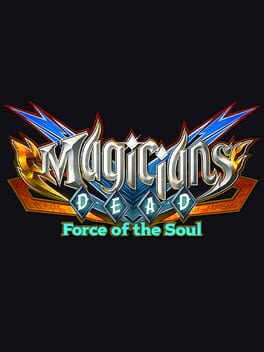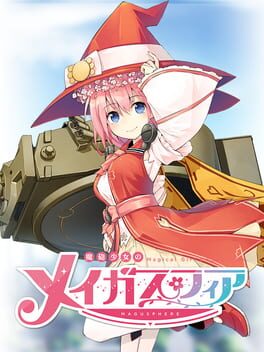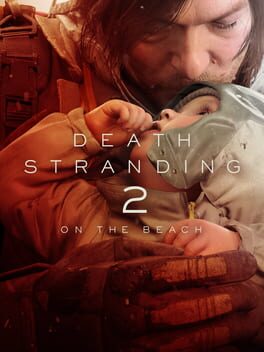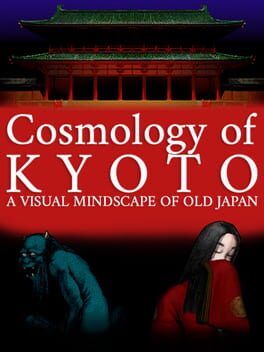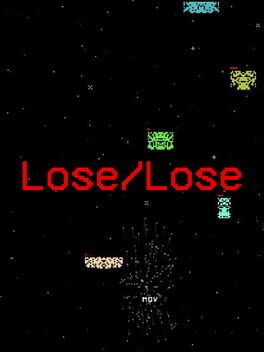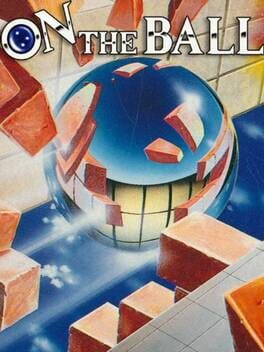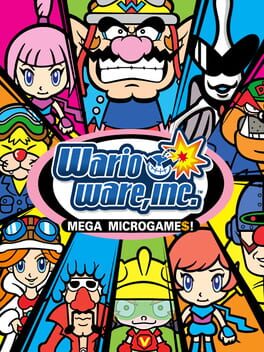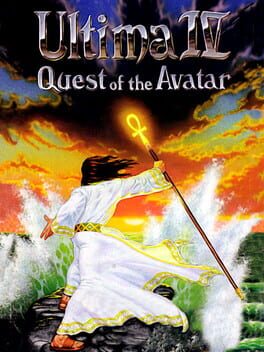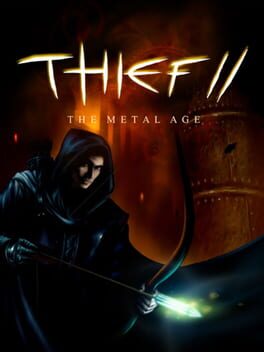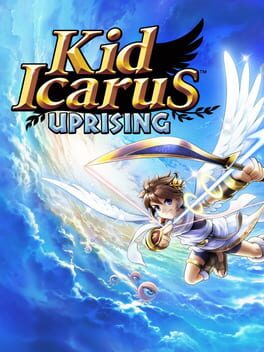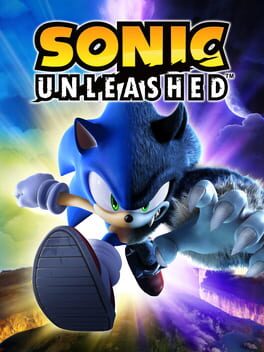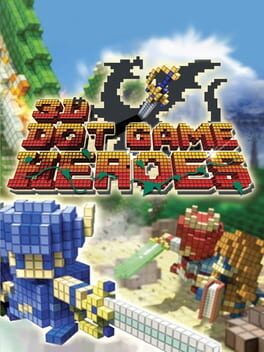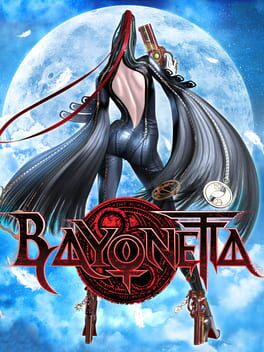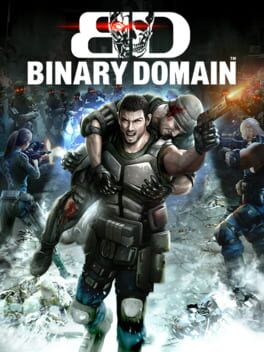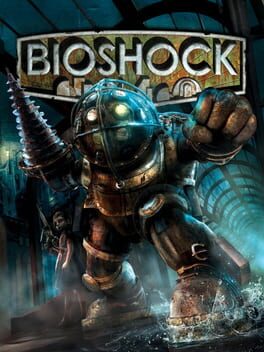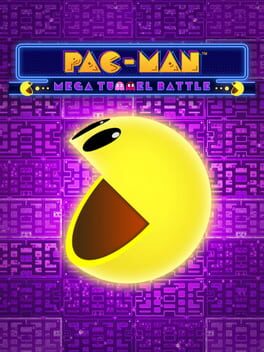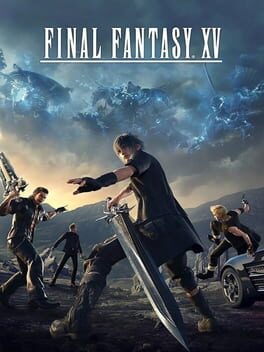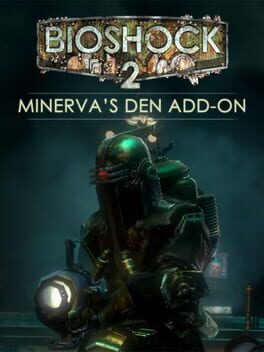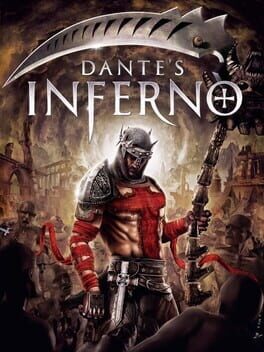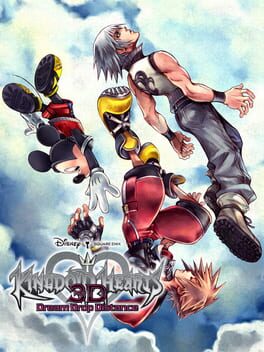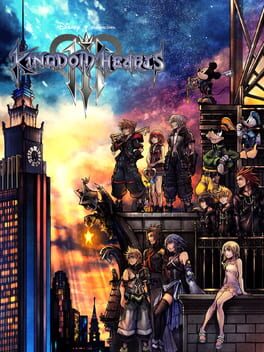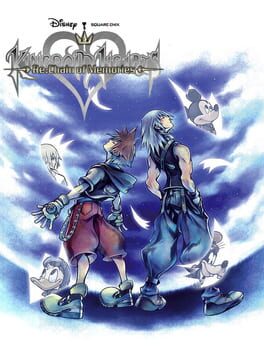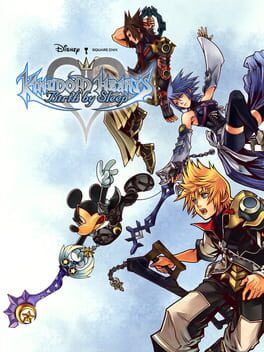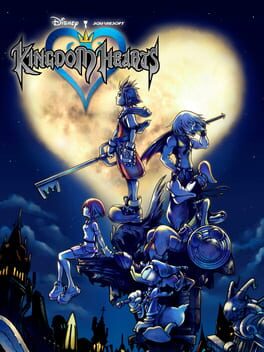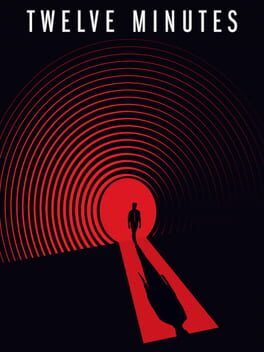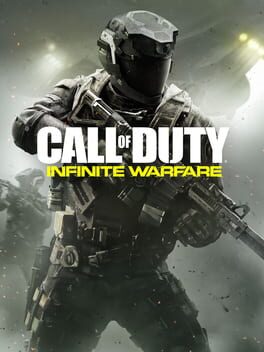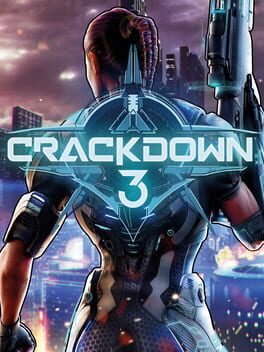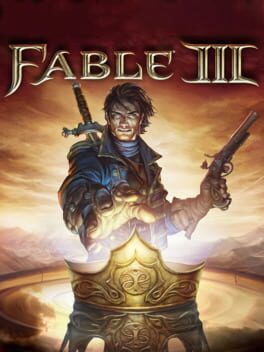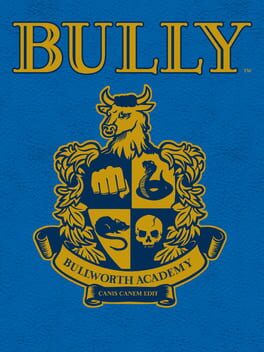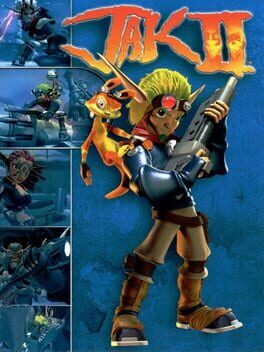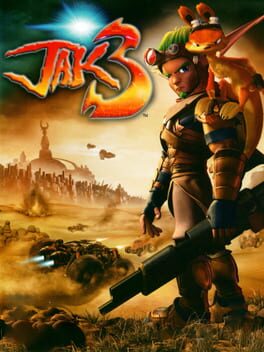AlwaysBetOnDunc
74 reviews liked by AlwaysBetOnDunc
Breakdown
2004
Tried playing this on Xemu but it looks and runs terribly. With a very good PC, it looks like you can make it run properly, but visual glitches will remain and they are so bad you'll find yourself able to see what's behind many doors or around the corner through the walls.
Even if I were to play this properly, I dunno how much I could get into this, honestly. Things that should be simple in a first person game like picking things up or reloading are unnecessarily complicated, janky and have long animations. Gotta enter "arm mode", gotta aim to what you wanna grab, gotta press the button to eat the food.
After the second gunfight or so, I ran out of ammo and couldn't find any on the guys I killed, though from what I see on videos, they should have it. I "arm mode'd" everywhere, didn't see anything, didn't pick anything up except one ration. Next encounter, tried punching them but it didn't seem doable to fistfight 3 guys yet at that stage of the game.
Maybe some other time, but until then, I think I'll remain Zeno Clash Gang.
Even if I were to play this properly, I dunno how much I could get into this, honestly. Things that should be simple in a first person game like picking things up or reloading are unnecessarily complicated, janky and have long animations. Gotta enter "arm mode", gotta aim to what you wanna grab, gotta press the button to eat the food.
After the second gunfight or so, I ran out of ammo and couldn't find any on the guys I killed, though from what I see on videos, they should have it. I "arm mode'd" everywhere, didn't see anything, didn't pick anything up except one ration. Next encounter, tried punching them but it didn't seem doable to fistfight 3 guys yet at that stage of the game.
Maybe some other time, but until then, I think I'll remain Zeno Clash Gang.
Final Fantasy XVI
2023
I considered strongly putting together a long-form critique of this game, but the most damning statement I could possibly make about Final Fantasy XVI is that I truly don't think it's worth it. The ways in which I think this game is bad are not unique or interesting: it is bad in the same way the vast majority of these prestige Sony single-player exclusives are. Its failures are common, predictable, and depressingly endemic. It is bad because it hates women, it is bad because it treats it's subject matter with an aggressive lack of care or interest, it is bad because it's imagination is as narrow and constrained as it's level design. But more than anything else, it is bad because it only wants to be Good.
Oxymoronic a statement as it might appear, this is core to the game's failings to me. People who make games generally want to make good games, of course, but paired with that there is an intent, an interest, an idea that seeks to be communicated, that the eloquence with which it professes its aesthetic, thematic, or mechanical goals will produce the quality it seeks. Final Fantasy XVI may have such goals, but they are supplicant to its desire to be liked, and so, rather than plant a flag of its own, it stitches together one from fabric pillaged from the most immediate eikons of popularity and quality - A Song of Ice and Fire, God of War, Demon Slayer, Devil May Cry - desperately begging to be liked by cloaking itself in what many people already do, needing to be loved in the way those things are, without any of the work or vision of its influences, and without any charisma of its own. Much like the patch and DLC content for Final Fantasy XV, it's a reactionary and cloying work that contorts itself into a shape it thinks people will love, rather than finding a unique self to be.
From the aggressively self-serious tone that embraces wholeheartedly the aesthetics of Prestige Fantasy Television with all its fucks and shits and incest and Grim Darkness to let you know that This Isn't Your Daddy's Final Fantasy, without actually being anywhere near as genuinely Dark, sad, or depressing as something like XV, from combat that borrows the surface-level signifiers of Devil May Cry combat - stingers, devil bringers, enemy step - but without any actual opposition or reaction of that series' diverse and reactive enemy set and thoughtful level design, or the way there's a episode of television-worth of lectures from a character explaining troop movements and map markers that genuinely do not matter in any way in order to make you feel like you're experiencing a well thought-out and materially concerned political Serious Fantasy, Final Fantasy XVI is pure wafer-thin illusion; all the surface from it's myriad influences but none of the depth or nuance, a greatest hits album from a band with no voice to call their own, an algorithmically generated playlist of hits that tunelessly resound with nothing. It looks like Devil May Cry, but it isn't - Devil May Cry would ask more of you than dodging one attack at a time while you perform a particularly flashy MMO rotation. It looks like A Song of Ice and Fire, but it isn't - without Martin's careful historical eye and materialist concerns, the illusion that this comes even within striking distance of that flawed work shatters when you think about the setting for more than a moment.
In fairness, Final Fantasy XVI does bring more than just the surface level into its world: it also brings with it the nastiest and ugliest parts of those works into this one, replicated wholeheartedly as Aesthetic, bereft of whatever semblance of texture and critique may have once been there. Benedikta Harman might be the most disgustingly treated woman in a recent work of fiction, the seemingly uniform AAA Game misogyny of evil mothers and heroic, redeemable fathers is alive and well, 16's version of this now agonizingly tired cliche going farther even than games I've railed against for it in the past, which all culminates in a moment where three men tell the female lead to stay home while they go and fight (despite one of those men being a proven liability to himself and others when doing the same thing he is about to go and do again, while she is not), she immediately acquiesces, and dutifully remains in the proverbial kitchen. Something that thinks so little of women is self-evidently incapable of meaningfully tackling any real-world issue, something Final Fantasy XVI goes on to decisively prove, with its story of systemic evils defeated not with systemic criticism, but with Great, Powerful Men, a particularly tiresome kind of rugged bootstrap individualism that seeks to reduce real-world evils to shonen enemies for the Special Man with Special Powers to defeat on his lonesome. It's an attempt to discuss oppression and racism that would embarrass even the other shonen media it is clearly closer in spirit to than the dark fantasy political epic it wears the skin of. In a world where the power fantasy of the shonen superhero is sacrosanct over all other concerns, it leads to a conclusion as absurd and fundamentally unimaginative as shonen jump's weakest scripts: the only thing that can stop a Bad Guy with an Eikon is a Good Guy with an Eikon.
In borrowing the aesthetics of the dark fantasy - and Matsuno games - it seeks to emulate, but without the nuance, FF16 becomes a game where the perspective of the enslaved is almost completely absent (Clive's period as a slave might as well not have occurred for all it impacts his character), and the power of nobility is Good when it is wielded by Good Hands like Lord Rosfield, a slave owner who, despite owning the clearly abused character who serves as our introduction to the bearers, is eulogized completely uncritically by the script, until a final side quest has a character claim that he was planning to free the slaves all along...alongside a letter where Lord Rosfield discusses his desire to "put down the savages". I've never seen attempted slave owner apologia that didn't reveal its virulent underlying racism, and this is no exception. In fact, any time the game attempts to put on a facade of being about something other than The Shonen Hero battling other Kamen Riders for dominance, it crumbles nigh-immediately; when Final Fantasy 16 makes its overtures towards the Power of Friendship, it rings utterly false and hollow: Clive's friends are not his power. His power is his power.
The only part of the game that truly spoke to me was the widely-derided side-quests, which offer a peek into a more compelling story: the story of a man doing the work to build and maintain a community, contributing to both the material and emotional needs of a commune that attempts to exist outside the violence of society. As tedious as these sidequests are - and as agonizing as their pacing so often is - it's the only part of this game where it felt like I was engaging with an idea. But ultimately, even this is annihilated by the game's bootstrap nonsense - that being that the hideaway is funded and maintained by the wealthy and influential across the world, the direct beneficiaries and embodiments of the status quo funding what their involvement reveals to be an utterly illusionary attempt to escape it, rendering what could be an effective exploration of what building a new idea of a community practically looks like into something that could be good neighbors with Galt's Gulch.
In a series that is routinely deeply rewarding for me to consider, FF16 stands as perhaps its most shallow, underwritten, and vacuous entry in decades. All games are ultimately illusions, of course: we're all just moving data around spreadsheets, at the end of the day. But - as is the modern AAA mode de jour - 16 is the result of the careful subtraction of texture from the experience of a game, the removal of any potential frictions and frustrations, but further even than that, it is the removal of personality, of difference, it is the attempt to make make the smoothest, most likable affect possible to the widest number of people possible. And, just like with its AAA brethren, it has almost nothing to offer me. It is the affect of Devil May Cry without its texture, the affect of Game of Thrones without even its nuance, and the affect of Final Fantasy without its soul.
Final Fantasy XVI is ultimately a success. It sought out to be Good, in the way a PS5 game like this is Good, and succeeded. And in so doing, it closed off any possibility that it would ever reach me.
It doesn’t really surprise me that each positive sentiment I have seen on Final Fantasy XVI is followed by an exclamation of derision over the series’ recent past. Whether the point of betrayal and failure was in XV, or with XIII, or even as far back as VIII, the rhetorical move is well and truly that Final Fantasy has been Bad, and with XVI, it is good again. Unfortunately, as someone who thought Final Fantasy has Been Good, consistently, throughout essentially the entire span of it's existence, I find myself on the other side of this one.
Final Fantasy XV convinced me that I could still love video games when I thought, for a moment, that I might not. That it was still possible to make games on this scale that were idiosyncratic, personal, and deeply human, even in the awful place the video game industry is in.
Final Fantasy XVI convinced me that it isn't.
Oxymoronic a statement as it might appear, this is core to the game's failings to me. People who make games generally want to make good games, of course, but paired with that there is an intent, an interest, an idea that seeks to be communicated, that the eloquence with which it professes its aesthetic, thematic, or mechanical goals will produce the quality it seeks. Final Fantasy XVI may have such goals, but they are supplicant to its desire to be liked, and so, rather than plant a flag of its own, it stitches together one from fabric pillaged from the most immediate eikons of popularity and quality - A Song of Ice and Fire, God of War, Demon Slayer, Devil May Cry - desperately begging to be liked by cloaking itself in what many people already do, needing to be loved in the way those things are, without any of the work or vision of its influences, and without any charisma of its own. Much like the patch and DLC content for Final Fantasy XV, it's a reactionary and cloying work that contorts itself into a shape it thinks people will love, rather than finding a unique self to be.
From the aggressively self-serious tone that embraces wholeheartedly the aesthetics of Prestige Fantasy Television with all its fucks and shits and incest and Grim Darkness to let you know that This Isn't Your Daddy's Final Fantasy, without actually being anywhere near as genuinely Dark, sad, or depressing as something like XV, from combat that borrows the surface-level signifiers of Devil May Cry combat - stingers, devil bringers, enemy step - but without any actual opposition or reaction of that series' diverse and reactive enemy set and thoughtful level design, or the way there's a episode of television-worth of lectures from a character explaining troop movements and map markers that genuinely do not matter in any way in order to make you feel like you're experiencing a well thought-out and materially concerned political Serious Fantasy, Final Fantasy XVI is pure wafer-thin illusion; all the surface from it's myriad influences but none of the depth or nuance, a greatest hits album from a band with no voice to call their own, an algorithmically generated playlist of hits that tunelessly resound with nothing. It looks like Devil May Cry, but it isn't - Devil May Cry would ask more of you than dodging one attack at a time while you perform a particularly flashy MMO rotation. It looks like A Song of Ice and Fire, but it isn't - without Martin's careful historical eye and materialist concerns, the illusion that this comes even within striking distance of that flawed work shatters when you think about the setting for more than a moment.
In fairness, Final Fantasy XVI does bring more than just the surface level into its world: it also brings with it the nastiest and ugliest parts of those works into this one, replicated wholeheartedly as Aesthetic, bereft of whatever semblance of texture and critique may have once been there. Benedikta Harman might be the most disgustingly treated woman in a recent work of fiction, the seemingly uniform AAA Game misogyny of evil mothers and heroic, redeemable fathers is alive and well, 16's version of this now agonizingly tired cliche going farther even than games I've railed against for it in the past, which all culminates in a moment where three men tell the female lead to stay home while they go and fight (despite one of those men being a proven liability to himself and others when doing the same thing he is about to go and do again, while she is not), she immediately acquiesces, and dutifully remains in the proverbial kitchen. Something that thinks so little of women is self-evidently incapable of meaningfully tackling any real-world issue, something Final Fantasy XVI goes on to decisively prove, with its story of systemic evils defeated not with systemic criticism, but with Great, Powerful Men, a particularly tiresome kind of rugged bootstrap individualism that seeks to reduce real-world evils to shonen enemies for the Special Man with Special Powers to defeat on his lonesome. It's an attempt to discuss oppression and racism that would embarrass even the other shonen media it is clearly closer in spirit to than the dark fantasy political epic it wears the skin of. In a world where the power fantasy of the shonen superhero is sacrosanct over all other concerns, it leads to a conclusion as absurd and fundamentally unimaginative as shonen jump's weakest scripts: the only thing that can stop a Bad Guy with an Eikon is a Good Guy with an Eikon.
In borrowing the aesthetics of the dark fantasy - and Matsuno games - it seeks to emulate, but without the nuance, FF16 becomes a game where the perspective of the enslaved is almost completely absent (Clive's period as a slave might as well not have occurred for all it impacts his character), and the power of nobility is Good when it is wielded by Good Hands like Lord Rosfield, a slave owner who, despite owning the clearly abused character who serves as our introduction to the bearers, is eulogized completely uncritically by the script, until a final side quest has a character claim that he was planning to free the slaves all along...alongside a letter where Lord Rosfield discusses his desire to "put down the savages". I've never seen attempted slave owner apologia that didn't reveal its virulent underlying racism, and this is no exception. In fact, any time the game attempts to put on a facade of being about something other than The Shonen Hero battling other Kamen Riders for dominance, it crumbles nigh-immediately; when Final Fantasy 16 makes its overtures towards the Power of Friendship, it rings utterly false and hollow: Clive's friends are not his power. His power is his power.
The only part of the game that truly spoke to me was the widely-derided side-quests, which offer a peek into a more compelling story: the story of a man doing the work to build and maintain a community, contributing to both the material and emotional needs of a commune that attempts to exist outside the violence of society. As tedious as these sidequests are - and as agonizing as their pacing so often is - it's the only part of this game where it felt like I was engaging with an idea. But ultimately, even this is annihilated by the game's bootstrap nonsense - that being that the hideaway is funded and maintained by the wealthy and influential across the world, the direct beneficiaries and embodiments of the status quo funding what their involvement reveals to be an utterly illusionary attempt to escape it, rendering what could be an effective exploration of what building a new idea of a community practically looks like into something that could be good neighbors with Galt's Gulch.
In a series that is routinely deeply rewarding for me to consider, FF16 stands as perhaps its most shallow, underwritten, and vacuous entry in decades. All games are ultimately illusions, of course: we're all just moving data around spreadsheets, at the end of the day. But - as is the modern AAA mode de jour - 16 is the result of the careful subtraction of texture from the experience of a game, the removal of any potential frictions and frustrations, but further even than that, it is the removal of personality, of difference, it is the attempt to make make the smoothest, most likable affect possible to the widest number of people possible. And, just like with its AAA brethren, it has almost nothing to offer me. It is the affect of Devil May Cry without its texture, the affect of Game of Thrones without even its nuance, and the affect of Final Fantasy without its soul.
Final Fantasy XVI is ultimately a success. It sought out to be Good, in the way a PS5 game like this is Good, and succeeded. And in so doing, it closed off any possibility that it would ever reach me.
It doesn’t really surprise me that each positive sentiment I have seen on Final Fantasy XVI is followed by an exclamation of derision over the series’ recent past. Whether the point of betrayal and failure was in XV, or with XIII, or even as far back as VIII, the rhetorical move is well and truly that Final Fantasy has been Bad, and with XVI, it is good again. Unfortunately, as someone who thought Final Fantasy has Been Good, consistently, throughout essentially the entire span of it's existence, I find myself on the other side of this one.
Final Fantasy XV convinced me that I could still love video games when I thought, for a moment, that I might not. That it was still possible to make games on this scale that were idiosyncratic, personal, and deeply human, even in the awful place the video game industry is in.
Final Fantasy XVI convinced me that it isn't.
Final Fantasy XVI
2023
'Those great, beautiful ships, rocking silently on the calm waters, with their idle and wistful sails, are they not telling us in a silent language — when will we depart for happiness?'
– Charles Baudelaire, Fusées, VIII, 1887 (personal translation).
One of the most difficult issues in fantasy studies is to define its contours and, by extension, its relationship to reality. In her seminal study, Fantasy: The literature of subversion (1981), Rosemary Jackson points out that fantasy violates the conventions and rules of our reality and: 'threatens to subvert rules and conventions taken to be normative [and] disturb "rules" of artistic representation and literature’s reproduction of the "real"' [1]. The capacity for deviation that speculative fiction offers is both an opportunity and a danger. Jackson points out that this subversive potential does not mean that fantasy or the fantastic are genres that always aim for social progressivism. In fact, the overwhelming majority of the pulp tradition was steeped in racist, homophobic and misogynist tropes that exerted a lasting influence on fiction throughout the late twentieth century and to this day.
The misogynist issue in Western-style fantasy
Many authors hide behind these historical precedents to conceal a conservative discourse. The existence of multiple races allows for the perpetuation of social oppression, and while female characters have generally become more active in recent decades, they continue to fit into old-fashioned stereotypes [2]. The Final Fantasy series is part of this dynamic and has always oscillated between these major themes of fantasy fiction, notably by offering a regular comparison between magic and technological modernity, nature and industry, good and evil, humanity and divinity. These dichotomies are relatively common and allow the story to touch on issues such as capitalist exploitation and the use of natural resources. However, the representation of other topics remains disastrous: Final Fantasy XIV (2010) is especially characterised by deep-seated racism and sexism, the latter partially masked by the presence of strong female characters in positions of power.
It is hard to say whether these precautions were taken to appeal to a particular audience, but it is clear that Final Fantasy XVI ignores all these concerns and plunges into the most outrageous archaism, piling on misogynistic scenes wherever possible, supposedly justified by the harshness of European medieval society. Excuses of this kind obscure the real issues. The player follows the story of Clive Rosfield, drawn into a quest for revenge after the Phoenix Gate incident, which spells the end of the Duchy of Rosaria. Miraculously reunited with his childhood friend Jill Warrick, he joins Cid's group, determined to change the situation of the Bearers – magic-capable individuals enslaved across the continent. Final Fantasy XVI is therefore a tale of free will and independence, pitting the dark nature of the world against the purity of Cid and Clive's ideals.
To create this atmosphere, as well as the division between good and evil, the title makes extensive use of violence, sex and sexual violence as narrative drivers. Lenise Prater explains that Fiona McIntosh's Percheron trilogy (2005) constructs: 'a series of juxtapositions between good and evil [...] through the representation of sexual violence' [3]. The same processes are at work in Final Fantasy XVI, from the very first narrative arc of the adventure, where Benedikta is cast as the archetypal femme fatale, ready to use her body to manipulate her rivals: the character is constantly brought back to her status as a woman, and it is the threat of sexual violence that cements her development – Annabella is constructed in a similar way. Final Fantasy XVI revels in the dichotomy between whores and innocent virgins. Despite the Western aesthetic of the title, Jill is no more than a yamato nadeshiko who is constantly sidelined by the game. She mostly serves as a narrative device to advance the plot, through her multiple visits to the infirmary or because she is kidnapped by Clive's enemies. The title denies her any agency, and her nuanced fragility is only hinted at in a few sentences before being brushed aside: it takes almost thirty hours of gameplay before Clive explicitly asks her how she is, despite her constant concern for the protagonist's anxieties.
A case for centrism and laissez-faire
This conservative portrayal is echoed in the discourse on the Bearers. The game is moderately critical of slavery on the continent and fails to make it a structural issue for Clive, who always remains somewhat detached from the problem. This issue is structurally embedded in the way the player interacts with the world, as they are extremely passive in relation to the events portrayed in the story. While the player is aware of the political manipulations taking place in Storm, they cannot act on them directly; Clive is blindly thrown into the fray and the situation is simply resolved in a battle that depoliticises the social stakes. Similarly, the Seals donated by certain NPCs guarantee Clive's reputation in the community in a highly artificial way, removing any roughness from the interactions. Clive fights to free the Bearers because he inherits this mission from his father and Cid, but this task seems disembodied throughout the game.
Beyond the main quest, the side quests are particularly lacklustre and do little to deepen the world-building. Because they can be accessed at any point in the game, Final Fantasy XVI chooses to exclude companions from them. They simply disappear from the cutscenes and thus have no chance to react to the world around them. Since the intention is to establish Clive as an ideologically good, open and self-governing character, all side quests are resolved by Clive's ideological concessions or miraculous unifications in the face of artificially created danger, without the slightest contradiction from any of the other main characters. Only in the final stretch does someone point out Clive's hypocrisy and domineering power over Jill, but the scene is quickly swept away by the return of Gav, the comic relief of the group.
Final Fantasy XVI is more concerned with shocking, melodramatic or cathartic platitudes than with radical denunciations of inequality and oppression. Worse, these shocking scenes do not even make the world dynamic, so poor is the structure of the narrative. Two problems stand out. Firstly, the interweaving of high-intensity sequences with slower passages: instead of building up the world through genuine slice-of-life sequences, the game multiplies banalities that the player has already understood for several dozen hours. The temporality of the story is also incoherent. Clive seems to cross the continent in a matter of hours, while his rivals remain completely passive. The confrontation between the Sanbreque Empire and the Dhalmekian Republic is characterised by irrational stagnation and passivity, allowing Clive to strike unhindered. The Twins always remain static, despite long ellipses in time.
A hollow and meaningless experience
Perhaps Final Fantasy XVI should not be taken so literally, but rather accepted as the nekketsu it becomes in the second half of the game. Such an interpretation would be acceptable if the game did not take itself so seriously. However, as in Final Fantasy XIV, the writing wallows in a very uncomfortable theatrical heaviness – which the actors generally manage to save from disaster – as if clumsily mimicking the drama of Shakespeare's historical plays. However, Clive's disillusioned, self-deprecating, borderline comic character breaks up this fiction. Some characters work well, playing up their theatrical nature, such as Cid or Lord Byron, but they are quickly relegated to the background or an essentially comic role.
The shifts in tone and pacing detract from the development of the narrative, which cannot be saved by a few flashes of brilliance. The aetheric floods seem to have been imagined as a reflection of nuclear risks, highlighting the danger of Japan's post-Fukushima energy crutch, but in the end they are only used as a narrative expedient to create danger where the plot needs it. The pinnacle of dishonesty and disrespect for a title that centres its discourse on human free will lies in the choice of names for the NPC fillers. In the pure tradition of Final Fantasy XIV, they include puns and comical alliterations ('Broom-Bearer') that strip them of all substance and reduce them to ridicule. In the second half of the game, a little girl is introduced as a character of some narrative importance, but the title does not even bother to give her a name or address her living conditions.
Meanwhile, the action sequences prove to be particularly hollow. The choreography in the first few hours is quite ingenious, highlighting Clive's agility with complex movements and rather creative camera angles. As the title progresses, this aspect is abandoned in favour of fights that drag on and resort to nekketsu clichés. The duel against Titan lasts forty minutes and is a miserable succession of attacks around the stone tentacles. Final Fantasy XVI even has the audacity to end the battle not with the obvious cinematic climax, but with a dull and particularly unpleasant aerial sequence. Subsequent encounters also drag on for no apparent reason other than to demonstrate a genuine – if futile – mastery of the lightning engine.
Ergonomics, gameplay and fluidity
While Final Fantasy XVI boasts detailed environments at first glance, the facade quickly cracks. The early areas are indeed highly detailed, to the point of drowning the player in detail – navigating through the thick vegetation is quite difficult, forcing the player to use Torgal to progress – but the quality deteriorates as the game progresses. The dense environments disappear in favour of vast open areas that struggle to convey the majesty of the world. Although the cities visible on the horizon are beautiful backdrops, they fail to radiate materially onto their surroundings, which then become mere abstractions. Moreover, Clive's movement is extremely sluggish: even getting on his chocobo is an unpleasant task that constantly interrupts the fluidity of the action, while the player is condemned to an extraordinary passivity in order to get from one place to another.
In the Hideaway, this impression is reinforced by Clive's inability to sprint: in the second half of the game, getting to the backyard is a gruelling chore. The magic of this cocoon quickly vanishes, as the various characters keep repeating themselves and are only mediocrely animated. Despite the detailed scenery, the game borrows all its animations from Final Fantasy XIV, giving a very artificial tone to the discussions. The Hideaway is less a place where the player can comfortably catch up with their favourite NPCs, and more a burdensome obligation to access NPCs, side quests and the hunt board – requiring the player to physically go there to see the location of elite monsters, a design mistake that even Final Fantasy XIV avoided.
The enjoyment of the combat system is left to the player and their experience of other character-action games, but it is absurd that the player has to wait at least twenty hours to finally be given a modicum of flexibility in their attack options: Final Fantasy XVI justifies its unique protagonist with a deep combat system that encourages the creation of diverse builds, but this philosophy is only appropriate in a New Game+ where all powers are unlocked from the start. In a first playthrough, the player must suffer from an impressive slowness, to the point where the Story Mode becomes an obvious option. The title here echoes the recent problem of Shadowbringers (2019) and especially Endwalker (2021), which first designs its battles with the Extreme and Savage versions, before cutting out the most difficult sections for the Normal versions – the result is a sense of incompleteness that is particularly damaging when combined with the very slowly evolving combat system.
It is difficult to place Final Fantasy XVI in the landscape of modern Japanese video games, so awkward is it in every way. With the title still in its cycle of artificial marketing in preparation for the DLCs, one can only speculate as to the reasons for these failings. Perhaps the lack of coherence can be explained by the fractured development team working on two major games, and the highly eclectic nature of the directors brought together by Naoki Yoshida. His design philosophy is particularly well suited to an MMO, but Final Fantasy XVI suffers greatly from it: the endless succession of side quests involving the Hideaway characters just before the final battle is incomprehensible, as if the game had remembered that it needed to conclude. Hiroshi Takai and Kazutoyo Maehiro's narrative vision is a series of shocking, empty, meaningless scenes: players of Heavensward (2015) had the opportunity to suffer from Ysayle's portrayal, and it is surprising that Final Fantasy XVI does even worse, a standard-bearer for passive misogyny in modern fantasy. That Jill's theme becomes 'My Star' and denies her any agency in the game's final moments is particularly painful and aptly sums up the title.
__________
[1] Rosemary Jackson, Fantasy: The literature of subversion, Routledge, London, 2005 [1981], p. 14.
[2] On the topic, see for example Peter Bebergal (ed.), Appendix N: The Eldritch Roots Of Dungeons & Dragons, Strange Attractor Press, London, 2021. In the afterword, Ann VanderMeer discusses the conservative roots of pulp fantasy and of the historical TTRPG.
[3] Lenise Prater, 'Monstrous Fantasies: Reinforcing Rape Culture in Fiona McIntosh's Fantasy Novels', in Hecate, vol. 39, no. 1-2, 2014.
– Charles Baudelaire, Fusées, VIII, 1887 (personal translation).
One of the most difficult issues in fantasy studies is to define its contours and, by extension, its relationship to reality. In her seminal study, Fantasy: The literature of subversion (1981), Rosemary Jackson points out that fantasy violates the conventions and rules of our reality and: 'threatens to subvert rules and conventions taken to be normative [and] disturb "rules" of artistic representation and literature’s reproduction of the "real"' [1]. The capacity for deviation that speculative fiction offers is both an opportunity and a danger. Jackson points out that this subversive potential does not mean that fantasy or the fantastic are genres that always aim for social progressivism. In fact, the overwhelming majority of the pulp tradition was steeped in racist, homophobic and misogynist tropes that exerted a lasting influence on fiction throughout the late twentieth century and to this day.
The misogynist issue in Western-style fantasy
Many authors hide behind these historical precedents to conceal a conservative discourse. The existence of multiple races allows for the perpetuation of social oppression, and while female characters have generally become more active in recent decades, they continue to fit into old-fashioned stereotypes [2]. The Final Fantasy series is part of this dynamic and has always oscillated between these major themes of fantasy fiction, notably by offering a regular comparison between magic and technological modernity, nature and industry, good and evil, humanity and divinity. These dichotomies are relatively common and allow the story to touch on issues such as capitalist exploitation and the use of natural resources. However, the representation of other topics remains disastrous: Final Fantasy XIV (2010) is especially characterised by deep-seated racism and sexism, the latter partially masked by the presence of strong female characters in positions of power.
It is hard to say whether these precautions were taken to appeal to a particular audience, but it is clear that Final Fantasy XVI ignores all these concerns and plunges into the most outrageous archaism, piling on misogynistic scenes wherever possible, supposedly justified by the harshness of European medieval society. Excuses of this kind obscure the real issues. The player follows the story of Clive Rosfield, drawn into a quest for revenge after the Phoenix Gate incident, which spells the end of the Duchy of Rosaria. Miraculously reunited with his childhood friend Jill Warrick, he joins Cid's group, determined to change the situation of the Bearers – magic-capable individuals enslaved across the continent. Final Fantasy XVI is therefore a tale of free will and independence, pitting the dark nature of the world against the purity of Cid and Clive's ideals.
To create this atmosphere, as well as the division between good and evil, the title makes extensive use of violence, sex and sexual violence as narrative drivers. Lenise Prater explains that Fiona McIntosh's Percheron trilogy (2005) constructs: 'a series of juxtapositions between good and evil [...] through the representation of sexual violence' [3]. The same processes are at work in Final Fantasy XVI, from the very first narrative arc of the adventure, where Benedikta is cast as the archetypal femme fatale, ready to use her body to manipulate her rivals: the character is constantly brought back to her status as a woman, and it is the threat of sexual violence that cements her development – Annabella is constructed in a similar way. Final Fantasy XVI revels in the dichotomy between whores and innocent virgins. Despite the Western aesthetic of the title, Jill is no more than a yamato nadeshiko who is constantly sidelined by the game. She mostly serves as a narrative device to advance the plot, through her multiple visits to the infirmary or because she is kidnapped by Clive's enemies. The title denies her any agency, and her nuanced fragility is only hinted at in a few sentences before being brushed aside: it takes almost thirty hours of gameplay before Clive explicitly asks her how she is, despite her constant concern for the protagonist's anxieties.
A case for centrism and laissez-faire
This conservative portrayal is echoed in the discourse on the Bearers. The game is moderately critical of slavery on the continent and fails to make it a structural issue for Clive, who always remains somewhat detached from the problem. This issue is structurally embedded in the way the player interacts with the world, as they are extremely passive in relation to the events portrayed in the story. While the player is aware of the political manipulations taking place in Storm, they cannot act on them directly; Clive is blindly thrown into the fray and the situation is simply resolved in a battle that depoliticises the social stakes. Similarly, the Seals donated by certain NPCs guarantee Clive's reputation in the community in a highly artificial way, removing any roughness from the interactions. Clive fights to free the Bearers because he inherits this mission from his father and Cid, but this task seems disembodied throughout the game.
Beyond the main quest, the side quests are particularly lacklustre and do little to deepen the world-building. Because they can be accessed at any point in the game, Final Fantasy XVI chooses to exclude companions from them. They simply disappear from the cutscenes and thus have no chance to react to the world around them. Since the intention is to establish Clive as an ideologically good, open and self-governing character, all side quests are resolved by Clive's ideological concessions or miraculous unifications in the face of artificially created danger, without the slightest contradiction from any of the other main characters. Only in the final stretch does someone point out Clive's hypocrisy and domineering power over Jill, but the scene is quickly swept away by the return of Gav, the comic relief of the group.
Final Fantasy XVI is more concerned with shocking, melodramatic or cathartic platitudes than with radical denunciations of inequality and oppression. Worse, these shocking scenes do not even make the world dynamic, so poor is the structure of the narrative. Two problems stand out. Firstly, the interweaving of high-intensity sequences with slower passages: instead of building up the world through genuine slice-of-life sequences, the game multiplies banalities that the player has already understood for several dozen hours. The temporality of the story is also incoherent. Clive seems to cross the continent in a matter of hours, while his rivals remain completely passive. The confrontation between the Sanbreque Empire and the Dhalmekian Republic is characterised by irrational stagnation and passivity, allowing Clive to strike unhindered. The Twins always remain static, despite long ellipses in time.
A hollow and meaningless experience
Perhaps Final Fantasy XVI should not be taken so literally, but rather accepted as the nekketsu it becomes in the second half of the game. Such an interpretation would be acceptable if the game did not take itself so seriously. However, as in Final Fantasy XIV, the writing wallows in a very uncomfortable theatrical heaviness – which the actors generally manage to save from disaster – as if clumsily mimicking the drama of Shakespeare's historical plays. However, Clive's disillusioned, self-deprecating, borderline comic character breaks up this fiction. Some characters work well, playing up their theatrical nature, such as Cid or Lord Byron, but they are quickly relegated to the background or an essentially comic role.
The shifts in tone and pacing detract from the development of the narrative, which cannot be saved by a few flashes of brilliance. The aetheric floods seem to have been imagined as a reflection of nuclear risks, highlighting the danger of Japan's post-Fukushima energy crutch, but in the end they are only used as a narrative expedient to create danger where the plot needs it. The pinnacle of dishonesty and disrespect for a title that centres its discourse on human free will lies in the choice of names for the NPC fillers. In the pure tradition of Final Fantasy XIV, they include puns and comical alliterations ('Broom-Bearer') that strip them of all substance and reduce them to ridicule. In the second half of the game, a little girl is introduced as a character of some narrative importance, but the title does not even bother to give her a name or address her living conditions.
Meanwhile, the action sequences prove to be particularly hollow. The choreography in the first few hours is quite ingenious, highlighting Clive's agility with complex movements and rather creative camera angles. As the title progresses, this aspect is abandoned in favour of fights that drag on and resort to nekketsu clichés. The duel against Titan lasts forty minutes and is a miserable succession of attacks around the stone tentacles. Final Fantasy XVI even has the audacity to end the battle not with the obvious cinematic climax, but with a dull and particularly unpleasant aerial sequence. Subsequent encounters also drag on for no apparent reason other than to demonstrate a genuine – if futile – mastery of the lightning engine.
Ergonomics, gameplay and fluidity
While Final Fantasy XVI boasts detailed environments at first glance, the facade quickly cracks. The early areas are indeed highly detailed, to the point of drowning the player in detail – navigating through the thick vegetation is quite difficult, forcing the player to use Torgal to progress – but the quality deteriorates as the game progresses. The dense environments disappear in favour of vast open areas that struggle to convey the majesty of the world. Although the cities visible on the horizon are beautiful backdrops, they fail to radiate materially onto their surroundings, which then become mere abstractions. Moreover, Clive's movement is extremely sluggish: even getting on his chocobo is an unpleasant task that constantly interrupts the fluidity of the action, while the player is condemned to an extraordinary passivity in order to get from one place to another.
In the Hideaway, this impression is reinforced by Clive's inability to sprint: in the second half of the game, getting to the backyard is a gruelling chore. The magic of this cocoon quickly vanishes, as the various characters keep repeating themselves and are only mediocrely animated. Despite the detailed scenery, the game borrows all its animations from Final Fantasy XIV, giving a very artificial tone to the discussions. The Hideaway is less a place where the player can comfortably catch up with their favourite NPCs, and more a burdensome obligation to access NPCs, side quests and the hunt board – requiring the player to physically go there to see the location of elite monsters, a design mistake that even Final Fantasy XIV avoided.
The enjoyment of the combat system is left to the player and their experience of other character-action games, but it is absurd that the player has to wait at least twenty hours to finally be given a modicum of flexibility in their attack options: Final Fantasy XVI justifies its unique protagonist with a deep combat system that encourages the creation of diverse builds, but this philosophy is only appropriate in a New Game+ where all powers are unlocked from the start. In a first playthrough, the player must suffer from an impressive slowness, to the point where the Story Mode becomes an obvious option. The title here echoes the recent problem of Shadowbringers (2019) and especially Endwalker (2021), which first designs its battles with the Extreme and Savage versions, before cutting out the most difficult sections for the Normal versions – the result is a sense of incompleteness that is particularly damaging when combined with the very slowly evolving combat system.
It is difficult to place Final Fantasy XVI in the landscape of modern Japanese video games, so awkward is it in every way. With the title still in its cycle of artificial marketing in preparation for the DLCs, one can only speculate as to the reasons for these failings. Perhaps the lack of coherence can be explained by the fractured development team working on two major games, and the highly eclectic nature of the directors brought together by Naoki Yoshida. His design philosophy is particularly well suited to an MMO, but Final Fantasy XVI suffers greatly from it: the endless succession of side quests involving the Hideaway characters just before the final battle is incomprehensible, as if the game had remembered that it needed to conclude. Hiroshi Takai and Kazutoyo Maehiro's narrative vision is a series of shocking, empty, meaningless scenes: players of Heavensward (2015) had the opportunity to suffer from Ysayle's portrayal, and it is surprising that Final Fantasy XVI does even worse, a standard-bearer for passive misogyny in modern fantasy. That Jill's theme becomes 'My Star' and denies her any agency in the game's final moments is particularly painful and aptly sums up the title.
__________
[1] Rosemary Jackson, Fantasy: The literature of subversion, Routledge, London, 2005 [1981], p. 14.
[2] On the topic, see for example Peter Bebergal (ed.), Appendix N: The Eldritch Roots Of Dungeons & Dragons, Strange Attractor Press, London, 2021. In the afterword, Ann VanderMeer discusses the conservative roots of pulp fantasy and of the historical TTRPG.
[3] Lenise Prater, 'Monstrous Fantasies: Reinforcing Rape Culture in Fiona McIntosh's Fantasy Novels', in Hecate, vol. 39, no. 1-2, 2014.
Final Fantasy XVI
2023
This review contains spoilers
Final Fantasy XVI is a complicated game for me to talk about. There are a lot of good things in this game I want to discuss, but there are even more bad things that outweigh them substantially. Forgive me if this is all over the place, I'm thinking off the top of my head right now. It's a frustrating experience, because when it's good, it's great, but then there's some extremely dire shit I can't get behind. Since Kingdom Hearts III's release, Square's been on a streak with excellent action RPGs releasing on a yearly basis from 2019 to 2022. XVI broke that streak for me. The story is intensely problematic, both in concept and execution. The game doesn't engage with its world and themes nearly as much as it should, and the way it portrays a lot of the cast is genuinely sickening. Elwin Rosfield is by all accounts a slave owner, yet everyone in the game speaks of him with such reverence and is portrayed as a paragon in the uncritical eyes of the masses in-game, including his own sons, long after his death. Yet his wife, whose name I can't remember for the life of me, gets labeled as a villain for wanting more power. My brother in The Founder, they're both fucked up. The cast in general may just be the worst of any mainline FF game. Clive is a very milquetoast protagonist, white bread is more interesting than Jill is, and nearly everyone else add absolutely nothing to the game. Speaking of Clive and Jill, I don't believe in their relationship at all. As someone who thrives on that shit whenever I play a game, the romance between them is so goddamn bare, the likes of which I haven't seen since Max and Chloe from Life is Strange. The only upside is I don't see their relationship as abusive unlike the example I just listed. Now, Clive's relationship with his brother Joshua is interesting and absolutely the best part of this game's story. It was the only time I felt genuinely captivated by FFXVI's narrative, and I wish there was more of it. Instead the game focuses on mundane side quests masked as story quests for what feels like hours on end without any real significance to the themes of the game. The game's pacing is all over the goddamn place, either feeling like it takes way too long for shit to happen, or feeling like certain scenes need a lot more breathing room. The game is nearly 40 hours long, about twice the length of your average KH game, but it says far less than those games do without half the thematic depth of those games. The pacing issues don't just stem from the story itself: the gameplay itself offers said issues as well. Battles go on for far too long to the point of overkill. I became legitimately exhausted at certain points fighting several of the boss fights simply because they overstay their welcome, and it ruins my view of them as a whole. They are not badly designed by any means, it's just if the length of these boss fights were cut down by about half, I'd enjoy them so much more. There's also the rate at which Clive's moveset opens up, and it is pitifully slow. Clive's basic combo sucks ass, and I wouldn't mind as much if the game at least paced itself out well enough, but you go such long periods of time in combat with it not evolving nearly fast enough to keep me entertained for such long stretches. I replayed Tales of Xillia 2 right after this, and it's night and day the difference in combat pacing between the two. Being fully decked out in FFXVI is like less than half the abilities you learn in Xillia 2, and that game has the extra advantage of not having 90% of the toolkit not tied to cooldowns. I'm not even gonna compare the combat to Kingdom Hearts II or III or even 1, because then it just starts getting sad for XVI. XVI is absolutely saved by its gamefeel however. It feels so goddamn great, from parrying to guarding to dodging, I have no real complaints in that regard. An action game can be raised significantly above its weight class if it at the very least feels good to play, and XVI more than succeeds in that regard. I just wish the rest of the faculties of the combat was as good as the gamefeel.
I don't like being overly negative when talking about video games. I'd rather focus my energy on games I like, like with my upcoming KH3 video, WHICH REFUSES TO BE FINISHED BECAUSE THE VIDEO EDITOR I'M USING IS A PIECE OF SHIT I WASTED 80 BUCKS ON- Anyway, FFXVI isn't without merit. It's got some great stuff in it, I just can't help but feel disappointed with what we got. After a string of great action RPGs where the worst game of that string is a high 8, FFXVI just feels so lacking by comparison. Maybe with time, I'll be more positive, but right now, I just wanna play something with more substance.
I don't like being overly negative when talking about video games. I'd rather focus my energy on games I like, like with my upcoming KH3 video, WHICH REFUSES TO BE FINISHED BECAUSE THE VIDEO EDITOR I'M USING IS A PIECE OF SHIT I WASTED 80 BUCKS ON- Anyway, FFXVI isn't without merit. It's got some great stuff in it, I just can't help but feel disappointed with what we got. After a string of great action RPGs where the worst game of that string is a high 8, FFXVI just feels so lacking by comparison. Maybe with time, I'll be more positive, but right now, I just wanna play something with more substance.
Everyone always points out the irony that a game which makes "you feel like spider-man" is infact very similar to a game that makes you feel like batman, however I see very few people mention that the Arkham games are just straight up better then this game. Better stealth, better combat, better art direction, better movement, better side quests, better bosses, and better action set pieces. Really all this game has going for it is the story, which is sort of corny and annoying in the kind of way Marvel is but I think it lands the mystery and key emotional moments it needs too.
The Pizza
2023
I’m a real fairweather Star Wars fan in the sense that I was deeply obsessed with it as a kid who was the prime age for prequel era stuff to be hitting real hard but how I interact with media and my relationship to concepts like fandom have radically changed over the years so that I’m not really the kind of person that big Disney franchise stuff appeals to. That said, I’m not like, anti-Star Wars; I had a great time with Andor and I’m the world’s only Cal Kestis liker (he’s nice! His ponchos are cool shut the fuck up!!). Something that’s really Activated the latent Star Wars fan in me like the world’s most annoying Manchurian Cnadidate, though, is that last year I started a podcast with a friend, a monthly book club where we read through all of the books by Matthew Stover, who has a lot of very good original work but is best known for the handful of Star Wars books he wrote, most famously the well-liked novelization of Revenge of the Sith.
So in the last three months I’ve read and talked about three really good books with my cohost who is a much bigger Star Wars person than me and they’re all occupying the old no-longer-canon extended universe stuff and man that shit really just scratches your brain. In particular was New Jedi Order: Traitor, the thirteenth book in its series set long after the original movies, occupying a similar narrative space that the current films and tv shows do but instead of interminable Disney franchise pipeline stuff they are trashy 90s sci fi schlock novels. Which is still generally very stupid, and very bad, but the WAY that they’re stupid is so much more unique, so much more propulsive and compelling as dumb art than anything anyone has made in the last decade for a franchise this big. It puts you in a mood.
Kyle Katarn.
This guy is that vibe personified. Kind of edgy but not really fake ass han solo luke skywalker in one dude ass guy in a doom game fighting What If Stormtroopers Had Black Armor And Were Big?? Fuck yeah dude this is the gamer’s star wars guy. His name’s fucking Kyle. But he does have a lot of character to him, even if it’s articulated mostly through voice lines during missions and the rare cutscene where he appears prominently. A lot of the story of this game happens around Kyle rather than to him or because of him.
But the fact that Kyle is such a distinct entity here is really noteworthy in and of itself. Dark Forces is a deceptively innovative game for something that looks like any other Doom II or Duke Nukem 3D like. A big part of that is how story driven it is. There aren’t actually that many cutscenes, maybe one every three levels or so, but they contextualize the missions well, and each individual mission has an extensive briefing beforehand that outlines everything in a lot more detail, written in character from your handler’s perspective (except for one mission where she’s captured by the empire and your goal is to rescue her – your briefing is absent because she’s gone it’s a great detail!). Missions have unique objectives and usually multiple per level that are all thematically appropriate to whatever you’re doing whether that’s stealing shit or looking for a guy to take hostage or planting bombs or finding evidence of a secret project or killing someone. This gives the game a different feel from levels that are purely Get To The End affairs, and the end NOT being get to the goal a lot of the time changes the way levels lay themselves out. Lucasarts was first and foremost an adventure game studio at this time and you definiteely feel that in the approach to puzzle design; you get a little bit of red key on the red door but there’s a lot of more esoteric navigational shit here too. Feels way more to me like Doom 64 than Doom II.
This game was actually in development BEFORE the original doom and coming out a year ahead of Duke Nukem, Dark Forces brings a lot to the mid-90s FPS table. It seems likely that Doom coming out would play heavy influence on this bad boy mid-development, but there’s a heavy emphasis on verticality in the level design here that’s explored really thoroughly through the 14 missions. Elevator puzzles, caverns, shafts, loops and cliffs, lots of different ways to explore this whole other axis of space. Platforming is a core part of this experience too and it works well. You can even like, point your gun up and down it’s wild.
The last way Dark Forces I think REALLY separates itself in this category of games (which I’m NOT an expert in and I know some of you reading are – please forgive me for not being a huge 90s shooter know stuff-er) is how aesthetically distinct it is. Levels very rarely reuse assets, and along with their distinct themes and objectives they all have distinct locations and visuals. More importantly than that though, they all try very hard to approximate real environments and the work pays off. These levels are abstract industrial spaces, they’re factories and mines and sewers and ships. Nothing like mind-blowingly innovative but it’s impressive how much these levels work as both 90s PC shooter levels and visibly true Places in a way that’s just not the case for most games like this.
It IS all in service of fighting guys called Darktroopers who are big stupid robots but that’s fine, really, that stupid shmooziness is a charm point, really. That’s the part that I WANTED from this game. The fact that on TOP of that it’s an extremely ambitious and completely successful shooter was a wholly unexpected surprise.
Next Time - STAR WARS: JEDI KNIGHT - DARK FORCES II
So in the last three months I’ve read and talked about three really good books with my cohost who is a much bigger Star Wars person than me and they’re all occupying the old no-longer-canon extended universe stuff and man that shit really just scratches your brain. In particular was New Jedi Order: Traitor, the thirteenth book in its series set long after the original movies, occupying a similar narrative space that the current films and tv shows do but instead of interminable Disney franchise pipeline stuff they are trashy 90s sci fi schlock novels. Which is still generally very stupid, and very bad, but the WAY that they’re stupid is so much more unique, so much more propulsive and compelling as dumb art than anything anyone has made in the last decade for a franchise this big. It puts you in a mood.
Kyle Katarn.
This guy is that vibe personified. Kind of edgy but not really fake ass han solo luke skywalker in one dude ass guy in a doom game fighting What If Stormtroopers Had Black Armor And Were Big?? Fuck yeah dude this is the gamer’s star wars guy. His name’s fucking Kyle. But he does have a lot of character to him, even if it’s articulated mostly through voice lines during missions and the rare cutscene where he appears prominently. A lot of the story of this game happens around Kyle rather than to him or because of him.
But the fact that Kyle is such a distinct entity here is really noteworthy in and of itself. Dark Forces is a deceptively innovative game for something that looks like any other Doom II or Duke Nukem 3D like. A big part of that is how story driven it is. There aren’t actually that many cutscenes, maybe one every three levels or so, but they contextualize the missions well, and each individual mission has an extensive briefing beforehand that outlines everything in a lot more detail, written in character from your handler’s perspective (except for one mission where she’s captured by the empire and your goal is to rescue her – your briefing is absent because she’s gone it’s a great detail!). Missions have unique objectives and usually multiple per level that are all thematically appropriate to whatever you’re doing whether that’s stealing shit or looking for a guy to take hostage or planting bombs or finding evidence of a secret project or killing someone. This gives the game a different feel from levels that are purely Get To The End affairs, and the end NOT being get to the goal a lot of the time changes the way levels lay themselves out. Lucasarts was first and foremost an adventure game studio at this time and you definiteely feel that in the approach to puzzle design; you get a little bit of red key on the red door but there’s a lot of more esoteric navigational shit here too. Feels way more to me like Doom 64 than Doom II.
This game was actually in development BEFORE the original doom and coming out a year ahead of Duke Nukem, Dark Forces brings a lot to the mid-90s FPS table. It seems likely that Doom coming out would play heavy influence on this bad boy mid-development, but there’s a heavy emphasis on verticality in the level design here that’s explored really thoroughly through the 14 missions. Elevator puzzles, caverns, shafts, loops and cliffs, lots of different ways to explore this whole other axis of space. Platforming is a core part of this experience too and it works well. You can even like, point your gun up and down it’s wild.
The last way Dark Forces I think REALLY separates itself in this category of games (which I’m NOT an expert in and I know some of you reading are – please forgive me for not being a huge 90s shooter know stuff-er) is how aesthetically distinct it is. Levels very rarely reuse assets, and along with their distinct themes and objectives they all have distinct locations and visuals. More importantly than that though, they all try very hard to approximate real environments and the work pays off. These levels are abstract industrial spaces, they’re factories and mines and sewers and ships. Nothing like mind-blowingly innovative but it’s impressive how much these levels work as both 90s PC shooter levels and visibly true Places in a way that’s just not the case for most games like this.
It IS all in service of fighting guys called Darktroopers who are big stupid robots but that’s fine, really, that stupid shmooziness is a charm point, really. That’s the part that I WANTED from this game. The fact that on TOP of that it’s an extremely ambitious and completely successful shooter was a wholly unexpected surprise.
Next Time - STAR WARS: JEDI KNIGHT - DARK FORCES II
Dead Space
2023
God of War
2018
God of War is a big serious game about guilt, redemption, peace, and teamwork but you spend most of the run time killing faceless monsters. It is an intimate, linear journey which is endlessly distracted by meandering fetch quests and side content. It neuters the near perfect camera of the original and replaces it with one which basically drags down the whole game with it. There are some benefit here for story telling reasons and a few of the set pieces, but I fail to see why the camera just couldn't change positions depending on the encounter, cutscene, or set pieces. Any good idea GOW4 has in its gameplay-the recall axe and combat environmental interactions- is just drowned out in just endless and tiring it is, and when you add in entirely pointless rpg mechanics it makes the main gameplay of the game something to dread more then anything. It even skirts any tough decisions in terms of gear by making Kratos's level a sum of his total gear's level so a player is incentived to just choose the gear which makes the level number go up or risk ending up too underlevered to fight enemies.
The story is an okay as a modern HBO/marvel blockbuster spin on Norse myth (its certainly better then Marvel's Thor) , but suffers from a constant slew of quips that deflate key moments and an obnoxiously respective approach to world building: how many times do we need to hear how much of an asshole Odin and Thor are? There is also just some some strange story decisions like how does Atreus fight off a hoard of dark elfs with an axe he was just handed? Its a minor thing but one which sticks out as contrary to the entire story, and is entirely in the cutscene so it doesn't have the excuse of Ludo narrative dissonance.
The original God of War games didn't have the most in-depth combat or nuanced story but it did deliver on constant, ever expanding action where Kratos's single minded rage, and darkly comedic ultitarianism could shine. While GOW4 sometimes delivers in the set piece front, these are few and far between the game's repetitive main combat. While GOW4's combat can feel fresh when a new weapon or move is unlocked, these new strategies quickly get lost in a see of visually similar enemies and rpg number crunching. While GOW4's story sometimes hits the emotional beats it built itself around, even these become diluted when bookended by hours of repetitive gore animations.
The story is an okay as a modern HBO/marvel blockbuster spin on Norse myth (its certainly better then Marvel's Thor) , but suffers from a constant slew of quips that deflate key moments and an obnoxiously respective approach to world building: how many times do we need to hear how much of an asshole Odin and Thor are? There is also just some some strange story decisions like how does Atreus fight off a hoard of dark elfs with an axe he was just handed? Its a minor thing but one which sticks out as contrary to the entire story, and is entirely in the cutscene so it doesn't have the excuse of Ludo narrative dissonance.
The original God of War games didn't have the most in-depth combat or nuanced story but it did deliver on constant, ever expanding action where Kratos's single minded rage, and darkly comedic ultitarianism could shine. While GOW4 sometimes delivers in the set piece front, these are few and far between the game's repetitive main combat. While GOW4's combat can feel fresh when a new weapon or move is unlocked, these new strategies quickly get lost in a see of visually similar enemies and rpg number crunching. While GOW4's story sometimes hits the emotional beats it built itself around, even these become diluted when bookended by hours of repetitive gore animations.

